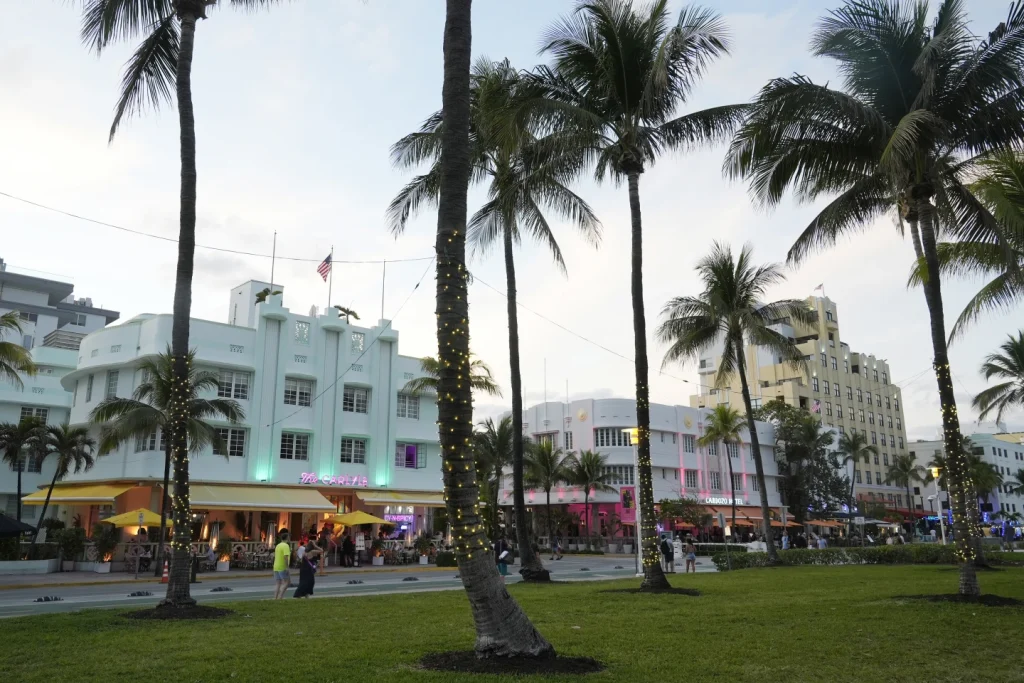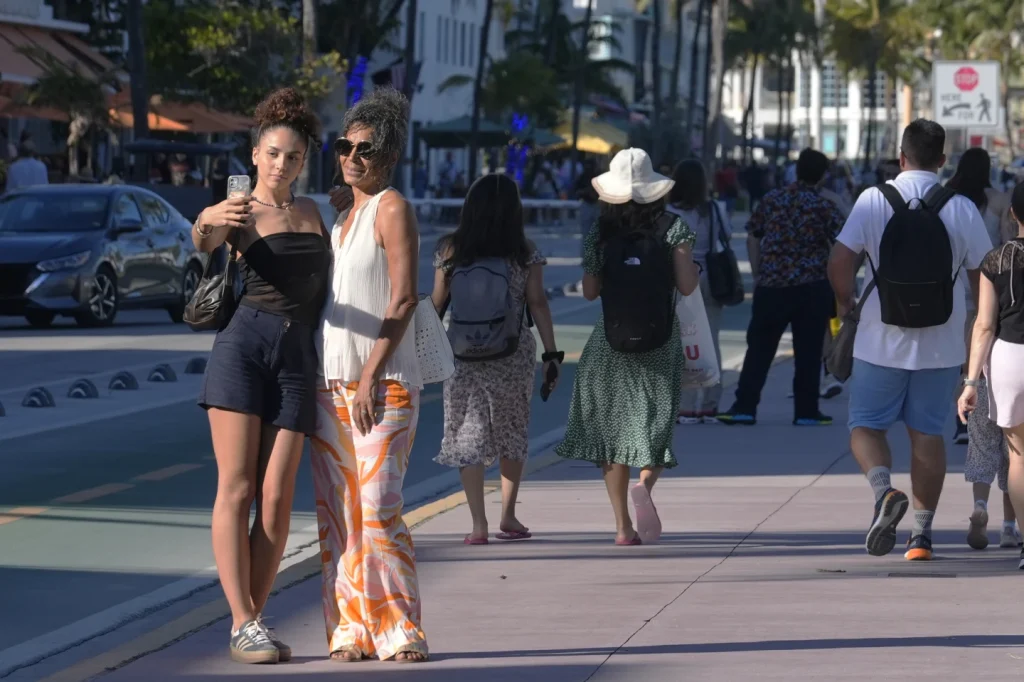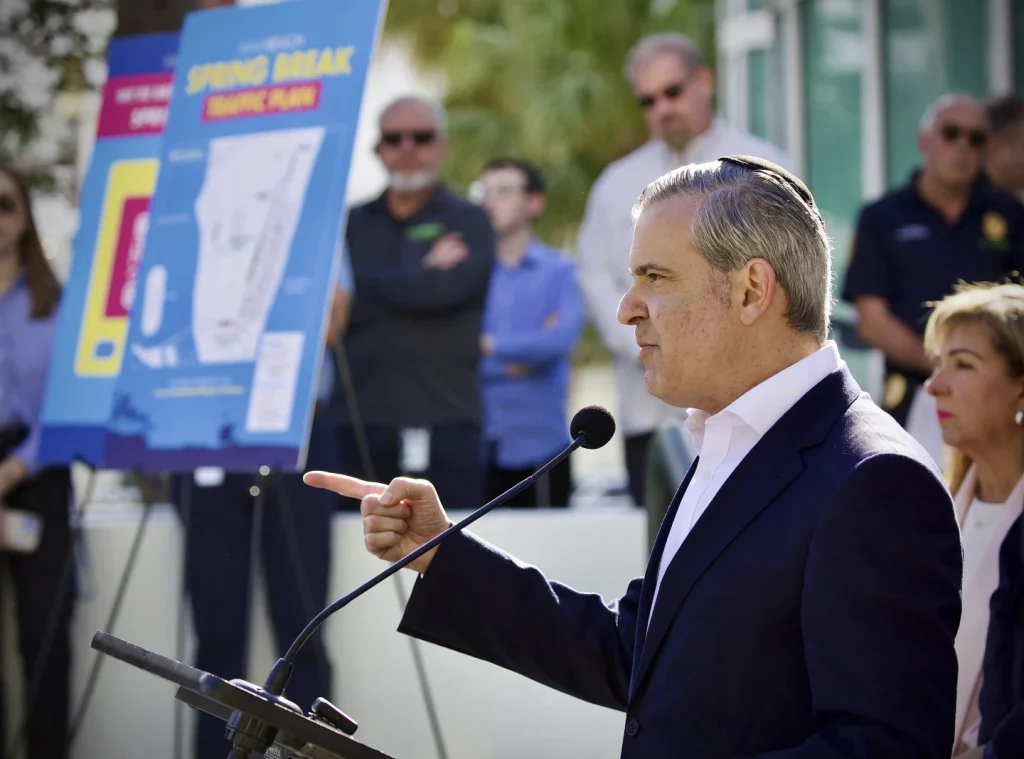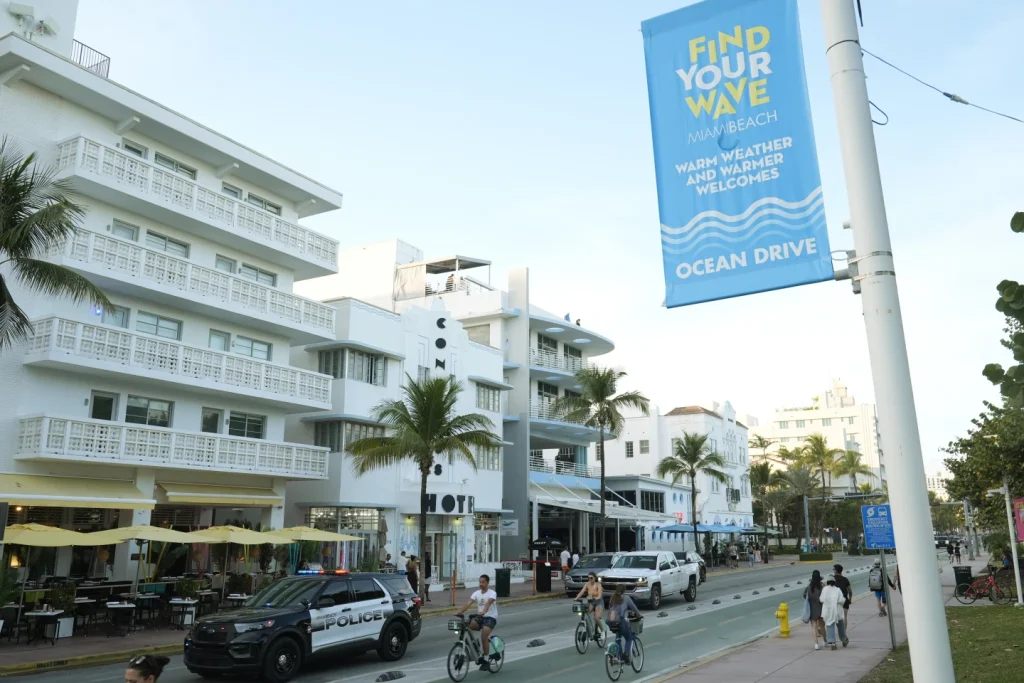Miami Beach, a renowned destination synonymous with sun, sand, and vibrant festivities, finds itself at a crossroads as it grapples with the tumultuous relationship it shares with spring break.
In recent years, the city has witnessed a distressing pattern of spring break violence, prompting local officials to take decisive action in an attempt to rein in the chaos that has marred this annual tradition.
The escalating concerns surrounding public safety during spring break have compelled Miami Beach authorities to institute a series of stringent security measures designed to restore order and tranquility to the city’s streets.
These measures include imposing parking restrictions for non-residents, shutting down sidewalk cafes on peak weekends, enforcing curfews, conducting bag searches at beaches, implementing early beach closures, setting up DUI checkpoints, and cracking down on drug-related offenses and acts of violence.
Furthermore, in a show of solidarity and support, Governor Ron DeSantis has authorized the deployment of 45 state law enforcement officers to bolster the local police force and ensure the effective enforcement of these measures.
While the primary objective behind these security measures is to safeguard public well-being and maintain law and order, the repercussions of these actions are reverberating across the local business community, particularly in the iconic South Beach neighborhood.
Concerns are mounting among business owners who fear potential financial losses during what is traditionally one of the busiest periods of the year.
Additionally, civil rights advocates have raised objections, viewing the restrictions as an excessive response disproportionately targeting large Black crowds and potentially infringing upon individual liberties.

Miami Beach Mayor Steven Meiner, in justifying the need for these stringent measures, emphasized the escalating challenges posed by unmanageable crowds despite a robust police presence.
He underscored the inherent limitations of the city’s infrastructure, situated on a barrier island with finite capacity, which has often been overwhelmed during the spring break period, jeopardizing the safety of both visitors and residents alike.
Governor DeSantis, in a resolute stance against criminal activities that threaten public safety and community well-being, affirmed the state’s commitment to upholding the rule of law and ensuring a safe and welcoming environment for all.
Emphasizing the distinction between fostering a spirit of hospitality and condoning disruptive behavior, he underscored the imperative of maintaining order and civility within the community.
The epicenter of spring break revelry in Miami Beach, the vibrant 10-block stretch of Ocean Drive, has long been synonymous with its distinctive blend of art deco hotels, restaurants, and nightclubs.
However, the current climate of uncertainty and apprehension has cast a shadow over this iconic locale, prompting soul-searching among stakeholders regarding the future trajectory of the city’s cultural identity and economic vitality.
David Wallack, the proprietor of Mango’s Tropical Cafe, a beloved fixture in the local entertainment scene, expressed apprehension over the potential ramifications of stringent restrictions on visitor access during the spring break season.
Citing the city’s historical legacy of celebration and vibrancy, Wallack cautioned against stifling the essence of Miami Beach’s unique charm and transforming it into a mere shadow of its former self.
He advocated for the creation of new, innovative events to revitalize the city’s appeal and recapture the spirit of festivity that has defined March as a pinnacle of excitement and energy.
As Miami Beach navigates the delicate balance between preserving public safety and nurturing its vibrant cultural heritage, the evolving dynamics of the spring break phenomenon underscore the complex interplay between tradition, security, economic interests, and community values.
The city stands at a pivotal juncture, tasked with recalibrating its approach to this annual ritual while upholding the principles of inclusivity, safety, and respect for all who call Miami Beach home or visit its shores.
Only time will reveal whether this attempt to redefine the narrative of spring break will herald a new chapter of harmony and prosperity for this iconic coastal paradise.
The proposal put forth by Wallack and others for a large music festival during the third week of spring break to address the issue of aimless and unruly crowds reaching their peak has sparked a contentious debate regarding public safety, racial implications, and the efficacy of such events in mitigating violence.
Meiner, a city official, expressed skepticism about the effectiveness of previous costly events in curbing violence, highlighting the negative impact on local businesses when violent mobs disrupt normal operations along Ocean Drive.

He pointed out that the troublemakers causing disturbances are not contributing to the city’s economy by staying in hotels or patronizing businesses.
On the other hand, some civil rights advocates argue that the proposed restrictions on events like Urban Beach Week are racially motivated, particularly given the historical context of South Beach becoming a popular destination for Black tourists.
Stephen Hunter Johnson, a member of Miami-Dade’s Black Affairs Advisory Board, criticized the city’s crackdown on events frequented by Black visitors as discriminatory, suggesting a double standard in government intervention based on race.
In contrast, Miami Beach’s mayor defended the city’s actions as necessary for public safety, refuting claims of racial bias and emphasizing the moral obligation to protect residents and visitors.
The situation in Panama City Beach, another spring break destination, mirrors concerns about escalating violence and the challenges faced by law enforcement in maintaining order during peak tourist seasons.
Police Chief Eusebio Talamantez attributed the rise in violent crime to external factors and emphasized the need for strict enforcement of laws to ensure a safe environment for all.
The debate over balancing public safety, economic interests, and civil liberties in the context of large-scale events like music festivals and spring break gatherings underscores the complex challenges faced by local authorities in managing crowds and preventing violence.
While measures such as alcohol bans and event restrictions have shown some success in reducing crime rates, external disruptions like natural disasters and pandemics have posed additional challenges for law enforcement agencies in maintaining order.
As cities like Miami Beach and Panama City Beach navigate the delicate balance between promoting tourism, ensuring public safety, and addressing concerns of racial discrimination, the need for comprehensive strategies that address the root causes of violence and disorder remains paramount.

Collaborative efforts between government officials, law enforcement agencies, businesses, and community stakeholders are essential in creating a safe and inclusive environment for residents and visitors alike.
Only through thoughtful planning, effective enforcement, and dialogue can cities effectively manage the complexities of hosting large events and safeguarding public well-being.
